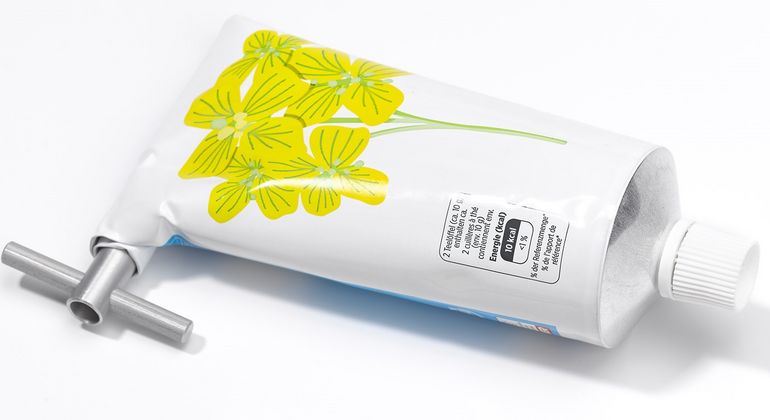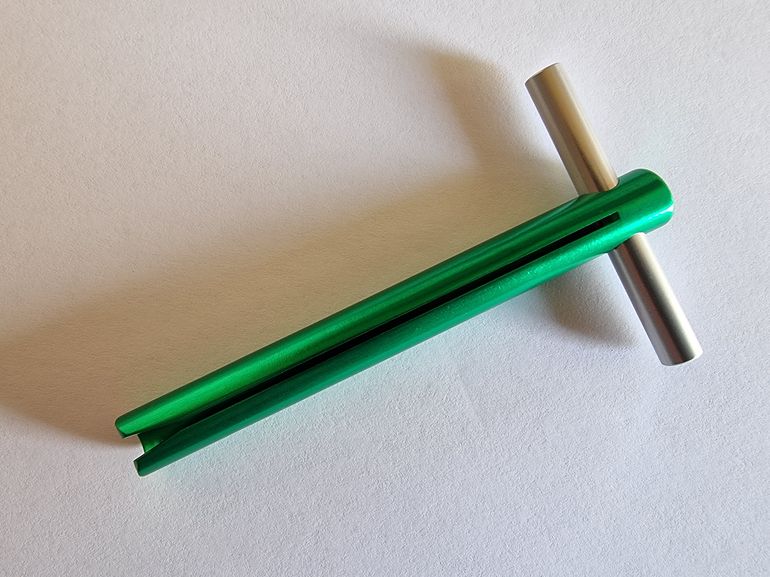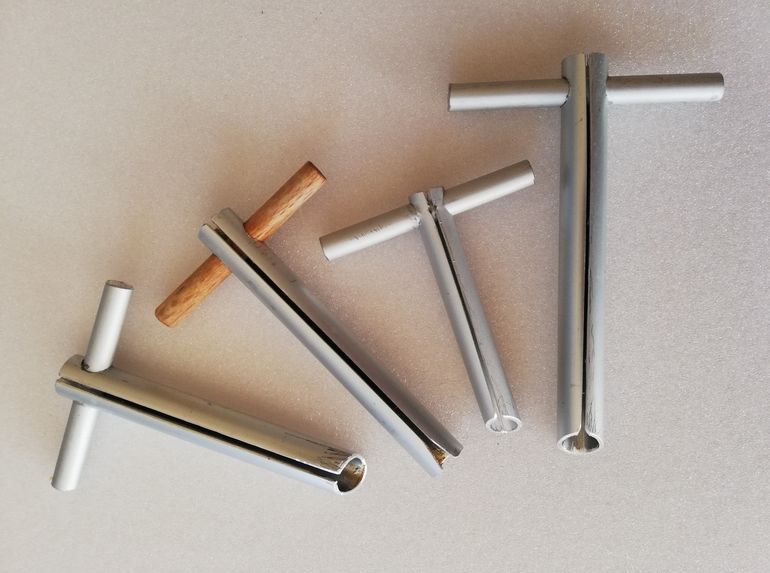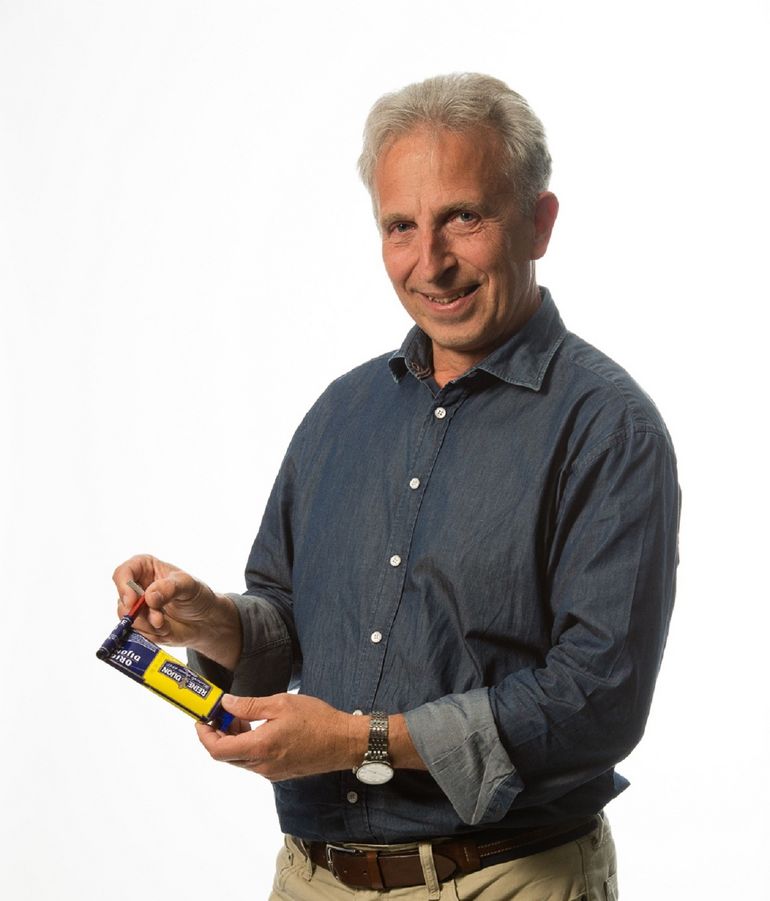Dölf Sigrist uses tube squeezers at home. “I'm not a particularly thrifty person, but I don’t like to waste food unnecessarily,” says the inventor. However, the materials and quality of the tube squeezers on the market have never met his expectations. He often finds the designs uninspiring. “For a long time, the popular models were made from bulky, fragile and usually brown-coloured plastic. They fulfilled their purpose, but were more or less nondescript,” says Dölf Sigrist.
For IP professionals
This is the portal for professionals working in the field of intellectual property. Here you'll find direct access to all necessary resources.
Quick links
The invention that finishes tubes off
Tubes of food like to keep the last remnants to themselves – something that bothered Dölf Sigrist for a long time. The tube squeezing gadgets available didn’t impress him, so he tried to develop a new kind of tube key. And found success. He registered his innovation for design protection with the IPI.

A clear idea of what a tube squeezing key should look like
The inventor believed that tube squeezers can also be aesthetic gadgets. Functional, minimalist and with an attractive design. He couldn’t stop thinking about this idea. In 2004, a change in his professional situation afforded him the time to tackle the project. Dölf’s aim was to create a tube squeezing key that fulfilled the following criteria:
- Quality, minimalist design
- Robust, long-lasting and indestructible (no plastic)
- Three sizes for all common aluminium tubes
- Easy to use
- 100% Swiss made
Protecting the tube tool from counterfeiters
An initial small batch of the keys was produced and Dölf’s friends, acquaintances and customers became excited about the tool. “I realised that I wanted to protect the unique product design. I had often been asked about doing so by friends and family,” recalls the determined inventor.
In 2004, he registered the tube key with the IPI (No. 130528). This gives him protection for up to 25 years, as long he renews it regularly. “The entry in the register for design protection gives me a certain level of security. It’s a barrier that prevents my product from being readily copied.” In the case of a dispute, he can also defend himself legally. A design right protects a shape (e.g. of a clock or lamp) or a pattern (e.g. a bottle label or fabric pattern).
There was also some luck and coincidence at play in the product’s success. “I got to know the right people. With their help, I was able to turn my prototype into a product ready for mass production,” says Dölf Sigrist.


Design protection renewed several times
“My tube key register entry is now 18 years old. I've renewed the period of protection several times because I’ve been pushing sales and marketing in the last three years and the product is now attracting interest from all over Switzerland,” he reports. He has limited the protection to Switzerland because it’s his most important market. So far, he has not had to defend his design. “I still regularly get asked if I've protected the tube key,” says the designer. His product range now includes several varieties of keys suitable for food tubes made of aluminium. He also has one for tubes of toothpaste.

Three design protection tips from Dölf Sigrist
Three design protection tips from Dölf Sigrist
On request, Dölf Sigrist gives other innovators tips based on his experience with protecting designs. “It’s very easy to register a design, and the 200 Swiss franc fee is a good investment,” says the businessman. His tips:
- A product with one or more unique features should be registered as soon as possible.
- The first period of five years gives you enough time to gain experience.
- This experience will help you to decide whether to renew protection.
More information:
- Dölf Sigrist’s tube key in the register: No. 130528
- What can you register as a design and what do you need to bear in mind when doing so? Find tips on design protection here.
- Website: www.drehmomente.ch
